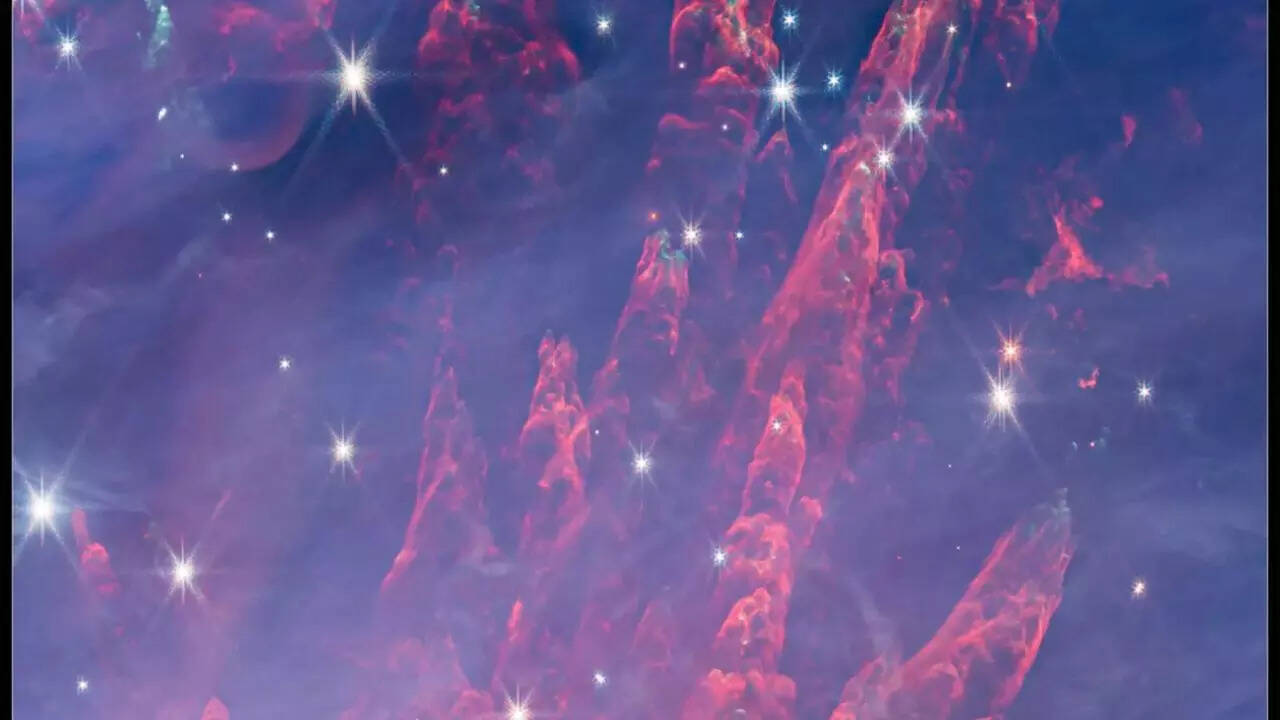World
Earth: Kilonova explosion in space could bring catastrophe and disrupt earth for 1000 years

[ad_1]
Scientists have uncovered that violent star collisions, known as kilonovae, have the potential to pose a catastrophic threat to our planet due to the lethal release of radiation, including gamma rays, cosmic rays, and x-rays, generated during these celestial occurrences.
“We found that if a neutron star merger were to occur within around 36 light-years of Earth, the resulting radiation could cause an extinction-level event,” Haille Perkins, a researcher at the University of Illinois Urbana-Champaign, conveyed this information to Space.com.
The immensely powerful collision of ultra-dense neutron stars, each containing a mass equivalent to approximately one billion tons within a mere teaspoon, results in a particle explosion capable of annihilating our planet’s ozone layer. This would render the Earth susceptible to ultraviolet radiation for the subsequent 1,000 years, constituting an extinction-level event, reported NYT.
“The specific distance of safety and component that is most dangerous is uncertain as many of the effects depend on properties like viewing angle to the event, the energy of the blast, the mass of material ejected, and more,” Perkins reassured.
Among all the lethal particles examined, researchers have identified cosmic rays as the most significant threat. The collision in space would generate a spreading cosmic ray bubble that would engulf everything in its trajectory, showering Earth with intensely energetic charged particles.
Equally concerning are the gamma rays. These rays emerge in the form of two concentrated beams from both sides of the merger, theoretically capable of incinerating any celestial body within a span of 297 light-years. Even an indirect exposure to gamma radiation could substantially deplete our ozone layer, necessitating approximately four years for recovery.
Furthermore, gamma ray interactions with the surrounding interstellar medium can generate ionizing X-ray emissions that affect our ozone layer in a manner lasting longer than gamma rays. While potentially more lethal, this impact would require Earth to be within approximately 16 light-years of the event to be felt.
Perkins’ team examined a 2017 neutron star merger 130 million light-years distant, releasing particles approximately 1,300 times Earth’s mass. Originally, scientists thought the kilonova could provide insights into the origins of heavy elements such as platinum, uranium, and gold.
But Perkins also assured panic is not necessary — kilonovas are “rare.”
“There are several other more common events like solar flares, asteroid impacts, and supernova explosions that have a better chance of being harmful,” Perkins said.
“We found that if a neutron star merger were to occur within around 36 light-years of Earth, the resulting radiation could cause an extinction-level event,” Haille Perkins, a researcher at the University of Illinois Urbana-Champaign, conveyed this information to Space.com.
The immensely powerful collision of ultra-dense neutron stars, each containing a mass equivalent to approximately one billion tons within a mere teaspoon, results in a particle explosion capable of annihilating our planet’s ozone layer. This would render the Earth susceptible to ultraviolet radiation for the subsequent 1,000 years, constituting an extinction-level event, reported NYT.
“The specific distance of safety and component that is most dangerous is uncertain as many of the effects depend on properties like viewing angle to the event, the energy of the blast, the mass of material ejected, and more,” Perkins reassured.
Among all the lethal particles examined, researchers have identified cosmic rays as the most significant threat. The collision in space would generate a spreading cosmic ray bubble that would engulf everything in its trajectory, showering Earth with intensely energetic charged particles.
Equally concerning are the gamma rays. These rays emerge in the form of two concentrated beams from both sides of the merger, theoretically capable of incinerating any celestial body within a span of 297 light-years. Even an indirect exposure to gamma radiation could substantially deplete our ozone layer, necessitating approximately four years for recovery.
Furthermore, gamma ray interactions with the surrounding interstellar medium can generate ionizing X-ray emissions that affect our ozone layer in a manner lasting longer than gamma rays. While potentially more lethal, this impact would require Earth to be within approximately 16 light-years of the event to be felt.
Perkins’ team examined a 2017 neutron star merger 130 million light-years distant, releasing particles approximately 1,300 times Earth’s mass. Originally, scientists thought the kilonova could provide insights into the origins of heavy elements such as platinum, uranium, and gold.
But Perkins also assured panic is not necessary — kilonovas are “rare.”
“There are several other more common events like solar flares, asteroid impacts, and supernova explosions that have a better chance of being harmful,” Perkins said.
#Earth #Kilonova #explosion #space #bring #catastrophe #disrupt #earth #years






